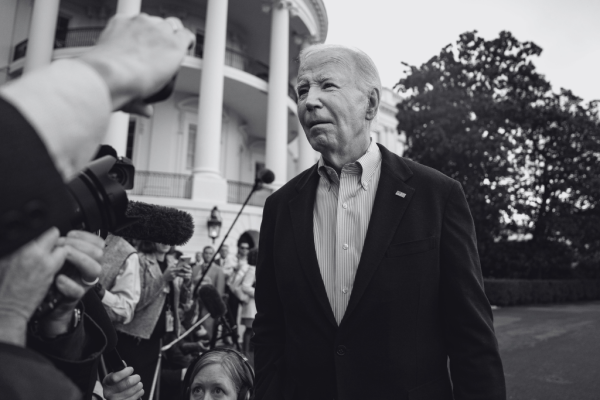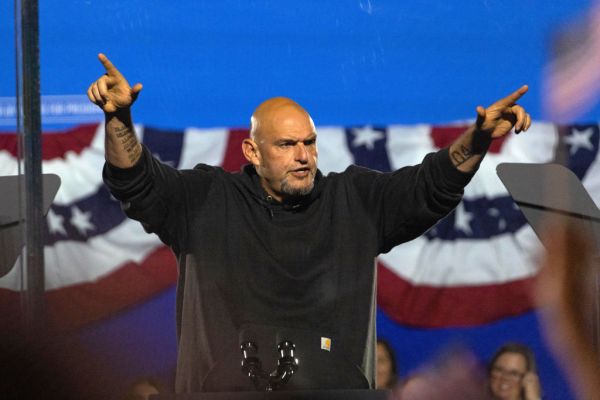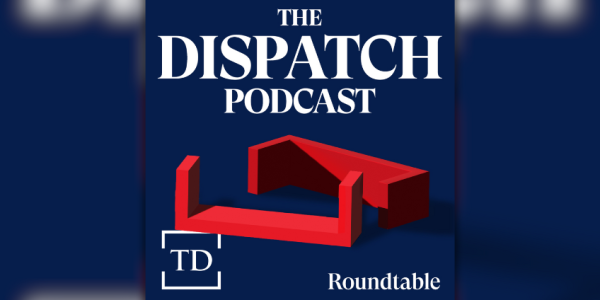Republicans will never tire of answering Democratic allegations of racism by pointing out that the GOP was the party created to oppose slavery, while Democrats not only defended it, but after its abolition doggedly opposed for a century protections for black Americans’ rights.
Which was true, right up until it wasn’t.
Lyndon Johnson’s remaining defenders say that his enthusiastic, cruel bigotry in private masked a deeper, sincere interest in civil rights. It also may be true, though, that he was a rotten man who was motivated more by political opportunism than humanity. Maybe both, or maybe it depended on the day or how smashed he was on Cutty Sark. Whatever his motives, Johnson effected perhaps the most radical change in partisan policy stances in American history in just a handful of years.
Johnson, who as Senate majority leader had neutered Republican-backed civil rights legislation in 1957, signed a far more aggressive version into law in 1964. Republicans watched as Democrats nabbed an issue that had been with the GOP since before the party had a name.
But the electoral pressure behind the move was obvious. The states of the former Confederacy that gained the most electoral votes between 1940 and 1968—Florida, Texas, and Virginia—were moving away from segregation, while the states that lost the most—Arkansas, Mississippi, and Alabama—were the ones most desperately attached to statutory racism. Keeping the Solid South solid was no longer worth the cost the party paid in the cities in the North where the Great Migration had deposited millions of black voters who had fled the South.
When those black Americans were in the South, they were either overtly disenfranchised or overwhelmed by the unanimity of the white vote for Democrats. But in the North, their votes became hugely valuable in trying to flip traditionally Republican states like Pennsylvania and Illinois.
Also significant was what segregation cost Democrats with younger and more educated white voters in the North and in the fast-growing West. The liberals were an insurgent force in the party—a populist youth movement that opposed the status quo not just on segregation but also on the Vietnam war. Where Johnson was the heir of a progressive tradition going back to before Woodrow Wilson 50 years earlier, the liberals were opposed to centralized power and coercive authority. Every burnt draft card (and bra) was a rejection of the progressivism that had become the party’s creed from Wilson to Roosevelt’s New Deal to Johnson’s perfectly progressively named Great Society.
In the Democratic Party, individual freedoms and the rejection of authority were supplanting the old values of the left: Central planning and social engineering required extensive abridgments of individual rights for the sake of the common good. When Johnson was forced from his re-election bid in 1968 by the liberal populist insurgents in the party, it was in the name of pacifism, yes, but also individualism and a belief in natural rights and moral liberty—très Rousseauian. The thinking went that people, whether they be black Americans in the South, 18-year-old draftees, or the Vietnamese, had natural rights and should be free to choose for themselves.
While the liberals were taking over the Democratic Party, a similar shift was happening on the Republican side.
The man Johnson beat in 1964, Barry Goldwater, was the first conservative to win his party’s nomination in 40 years. In the run from Herbert Hoover in 1928 to Dwight Eisenhower’s second term, the Republicans had settled on a kind of new nationalism. The conservatism of Calvin Coolidge and William Taft that prized the virtues of the American founding above all other political ideas was thrown over for a kind of pragmatic, generally pro-business Republicanism that would find its fullest flowering in the man who succeeded Goldwater as GOP nominee, Richard Nixon.
Like Hoover and the three other palookas who went down to FDR, Nixon was technocratic and enthusiastic about the use of government power, and not overly concerned about the delicate points of the Constitutional order. Nixon was also a control freak. When he was asked whether he could have taken “illegal” actions against anti-war groups, Nixon replied, “Well, when the president does it, that means that it is not illegal.” The EPA, price controls to try to fight inflation, and these uniforms for the White House guards had to come from a nationalist, not a conservative.
Goldwater’s loss in 1964 did not stop the conservative insurgency inside the Republican Party, though. Indeed, when Nixon’s own corruption and authoritarian tendencies brought him down, it made the conservatives look pretty good. Conservatives of the younger generation, like William Buckley, had been pushing hard all through the 1960s against the nationalistic establishment. Ronald Reagan, Goldwater’s hype man who became the popular, conservative governor of California, threw a scare into Gerald Ford in 1976, before finally toppling the establishment completely in 1980.
By the 1980s, the liberals and conservatives were absolutely in charge of their respective parties. Both factions had claimed their authority not just through moral legitimacy, but also through a populist push. Liberals and conservatives both said they spoke for marginalized voters who represented the authentic soul of the party. The progressive and nationalistic establishments, by this argument, were using their elite status to keep the real Republicans and Democrats down.
Once in power, the liberals and conservatives reigned for decades. But not any more.
Donald Trump was way more Nixon than Nixon, a paranoid plotter who treated the Constitution like a pre-nup he could either exploit or ignore depending on his needs. The nationalist right today often treats appeals to the principles of the Founding as cuckoldry and obsesses over the demise of real American culture. The populist revolt on the right enthroned nationalism over the conservative establishment that populists said was too weak.
On the left, the story has been the same. Joe Biden was there for the last changing of the guard when the populist liberals pushed out the progressive establishment. When he was elected to the Senate in 1972, Biden was navigating between the old progressive bulls, many of whom had been segregationists—just ask Kamala Harris—and the new generation of individual-rights-oriented liberals of which he was a part.
Today’s progressive left, like Elizabeth Warren and her “big, structural change,” has been engaged in a long assault on the party’s liberal establishment. On racism, global warming, income inequality, and more, the populists charge that the elites have been withholding solutions from the people, that Biden or Barack Obama before him could have solved all these problems but chose not to because they were sellouts.
Five decades after liberals pushed out the progressives for their abuses of power and a lack of respect for individual rights, the progressives are poised to take over the party on a promise of massive increases in government power and more social engineering.
That’s all just to say that the nationalists and progressives who are now ascendant were—in the lives of their parents’ generation—the political establishments in their parties. And the conservatives and liberals recently unhorsed were, not too long ago, the populist firebrands themselves.
Looks like they’re going to have to get back in practice.









Please note that we at The Dispatch hold ourselves, our work, and our commenters to a higher standard than other places on the internet. We welcome comments that foster genuine debate or discussion—including comments critical of us or our work—but responses that include ad hominem attacks on fellow Dispatch members or are intended to stoke fear and anger may be moderated.
You are currently using a limited time guest pass and do not have access to commenting. Consider subscribing to join the conversation.
With your membership, you only have the ability to comment on The Morning Dispatch articles. Consider upgrading to join the conversation everywhere.